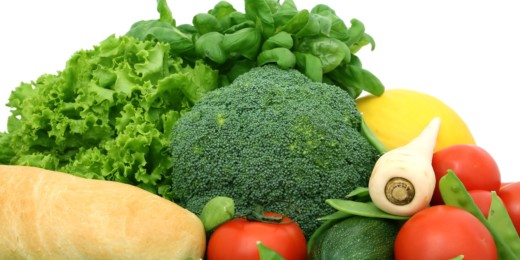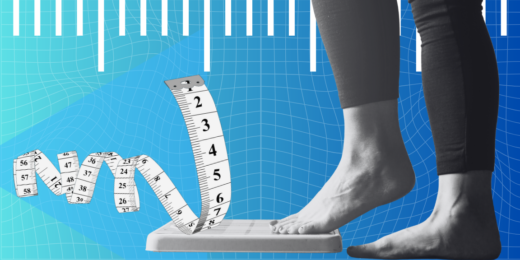As the name implies, this diet reduces dietary carbohydrates, including many common foods that contain sugars and/or starches. To make up for this reduction, the intake of protein and fat can increase. Frequently, however, low-carb dieters do not fully replace the calories from reducing carbs and they lose weight as a result.
This diet has several favorable features, but a high intake of animal-based saturated fats can offset the benefits. One version, the Atkins Diet, was promoted to facilitate weight loss. A problem with interpreting “low carbohydrate” is that there is no consensus on how low is “low.”
Health rationale slogan: Restricting carbs helps you lose weight and solves many metabolic problems.
Analysis: Depending on how low carb you go, a lower carb diet potentially restricts multiple common foods including grains, legumes, fruits, breads, desserts, pastas, and starchy vegetables. Particularly off-limits: processed foods made with flour and added sugars. Food sources higher in protein and fat take their place, such as meats, eggs and nuts.
The diet’s potential benefits are many, including helping reverse insulin resistance, an early stage in the development of type 2 diabetes. It does this by restoring normal carbohydrate processing. By restricting carb intake, the body no longer has to cope with a large, sudden influx of sugar into the bloodstream. In addition, people following this diet may experience less hunger when they restrict calories, which facilitates weight loss (at least in the short term).
Stanford nutrition scientist Christopher Gardner, PhD, studied longer term weight loss and demonstrated similar favorable benefits from a lower carb vs. a lower fat diet when both approaches focused on healthy choices.
The food sources that are low carb range widely in healthfulness. For example, meat has no carbohydrates, but if meat intake is increased to replace carbohydrates, this can boost unfavorable saturated fats. Interestingly, in Gardner’s weight loss study, the group that followed a healthy low-carb diet had no adverse metabolic effects. This group decreased overall calories almost solely by restricting carbohydrate-rich foods, without substantially increasing protein or saturated fat intake.
If the carbohydrate restriction goes beyond added sugars and refined grains, to the point of restricting vegetables, whole grains and beans/legumes, this can result in vitamin and mineral deficiencies. And, if carb intake is low enough, ketosis can occur with its accompanying nausea, headache, physical and mental effects, and bad breath. Additionally, carbohydrate-rich foods are the primary sources of fiber, and low-fiber diets increase the risk of colon cancer and may have adverse effects on the gut microbiome.
Easy to follow?: Depending on how severe the carbohydrate restriction, this diet can be difficult to follow because it can dramatically restrict the intake of most of the major food groups, including fruits, beans/legumes, grains, starchy vegetables, and dairy.
Dominant source of protein: Animal proteins such as meat and eggs, which don’t contain carbs (unlike protein-rich legumes and grains).
Most common fats: Oils and saturated fats from meat.
What about carbs?: Limited carbs, but some variations of this diet can include potentially good carbs found in fibrous vegetables and beans/legumes.
When it goes wrong: Emphasizing meat consumption can lead to problems. High intake of the saturated fats found in meat may increase the risk of future heart disease and cancer. This harm would be greatest from emphasizing fatty red meats (steak, bacon, etc.) or processed meats, as opposed to leaner meats, such as poultry.
To make it healthier: The potential health benefits of lower carb diet can be maximized by focusing primarily on eliminating added sugars and refined grains, and emphasizing sources of fat from plant sources (e.g., olive oil, nuts, avocados), from fatty fish (e.g., salmon), or from lean meats.
Variations: The Atkins diet emphasizes restricting carbs, but allows as much fats and protein as desired. If carbohydrates are severely restricted, a low-carb diet becomes a ketogenic diet.
If you’re going to cheat: Including beans/legumes may make sense because their more complex starches and fiber differ from the simple starches in processed grains and starchy vegetables. Eating these foods provides a much greater range of possible foods, making the diet easier to follow.
Conclusion: A lower carb diet can offer weight loss and metabolic improvements. In its extreme forms where all starchy vegetables, bean/legume, fruit, and grain intake is restricted, it is difficult to follow and has the drawback of high saturated fat and low fiber intake.
Nonetheless, this diet could be a good starting place for initiating weight loss when the focus is on minimizing added sugars and refined grains, and maintaining or even increasing fibrous vegetables.
This is the seventh post in a series called A Skeptical Look at Popular Diets. The series will review the eight currently most prominent diets in America. The next blog post will discuss low-fat diets.
Randall Stafford, MD, PhD, is a professor of medicine at Stanford. He practices primary care internal medicine and studies strategies for preventing chronic disease. Stanford professor and nutrition scientist Christopher Gardner, PhD, examines the impact of diet on health and disease. Min Joo Kim provided research assistance.
Photo by Jakub Kapusnak





